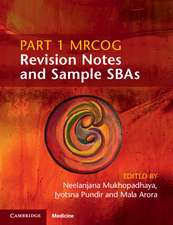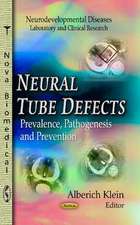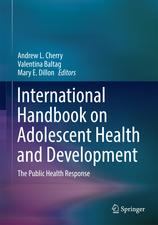Obstetrics: Evidence-based Algorithms
Autor Jyotsna Pundir, Arri Coomarasamyen Limba Engleză Paperback – 6 apr 2016
Preț: 314.96 lei
Preț vechi: 331.54 lei
-5% Nou
60.27€ • 63.10$ • 49.99£
Carte în stoc
Livrare din stoc 28 februarie
Specificații
ISBN-10: 1107618932
Pagini: 338
Ilustrații: 570 colour illus. 1 table
Dimensiuni: 238 x 276 x 18 mm
Greutate: 0.98 kg
Editura: Cambridge University Press
Colecția Cambridge University Press
Locul publicării:New York, United States
Cuprins
List of abbreviations; Part I. Fetal Conditions: 1. Prenatal screening for aneuploidy and neural tube defects; 2. Routine fetal ultrasound screening; 3. Amniocenteses and chorionic villus sampling; 4. Non immune fetal hydrops; 5. Late intrauterine fetal death and stillbirth; 6. Fetal haemolytic disease; 7. Anti-D immunoglobulin for rhesus D prophylaxis; 8. Small for gestational age babies (SGA); 9. Reduced fetal movements (RFM); 10. Multiple pregnancy – twin pregnancy; 11. Amniotic fluid abnormalities; Part II. Infections in Pregnancy: 12. Human immunodeficiency virus; 13. Hepatitis; 14. Group B streptococcal disease in pregnancy; 15. Viral rash in pregnancy; 16. Genital herpes in pregnancy; 17. Rubella infection in pregnancy; 18. CMV infection in pregnancy; 19. Toxoplasmosis in pregnancy; 20. Parvo-virus infection in pregnancy; 21. Chicken pox in pregnancy; 22. Measles in pregnancy; 23. Malaria in pregnancy; 24. Bacterial sepsis in pregnancy; Part III. Antenatal Care: 25. Antenatal care; 26. Pregnancy induced hypertension (PIH) or gestational HT; 27. Pre-eclampsia (PET) and eclampsia; 28. Obstetric cholestasis (OC); 29. Gestational diabetes mellitus (GDM); 30. Antepartum haemorrhage (APH); 31. Preterm prelabour rupture of membranes (PPROM); 32. Preterm labour (PTL); 33. Preterm labour – tocolysis and antenatal corticosteroids; Part IV. Maternal Medicine: 34. Chronic hypertension; 35. Pregnancy in pre-existing type 1 or type 2 diabetes mellitus; 36. Cardiac disease and pregnancy; 37. Thyroid disorders in pregnancy; 38. Renal condition in pregnancy; 39. Iron deficiency anaemia in pregnancy; 40. Epilepsy in pregnancy; 41. Haemoglobinopathies – sickle cell disease in pregnancy; 42. Haemoglobinopathies – beta thalassemia in pregnancy; 43. Prevention and treatment of thrombosis and embolism during pregnancy and the puerperium; 44. Pruritis in pregnancy; 45. Antenatal and postnatal mental health; Part V. Labour and Delivery: 46. Breech presentation; 47. Caesarean section (CS); 48. Induction of labour (IOL); 49. Intra partum care; 50. Operative vaginal delivery (OVD); 51. Vaginal birth after previous caesarean section (VBAC); 52. Management of third, and fourth-degree, perineal tears; Part VI. Obstetric Emergencies: 53. Shoulder dystocia; 54. Prevention and management of postpartum haemorrhage (PPH); 55. Blood transfusion (BT) in obstetrics; 56. Maternal collapse in pregnancy and the puerperium; 57. Umbilical cord prolapse; 58. Neonatal resuscitation; Part VII. Postnatal Care: 59. Postnatal care; 60. Bacterial sepsis following pregnancy; Part VIII. Miscellaneous: 61. Obesity in pregnancy; 62. Alcohol consumption in pregnancy; 63. Smoking in pregnancy; 64. Teenage pregnancy; 65. Reproductive ageing; 66. Air travel in pregnancy; 67. Women with breast cancer in pregnancy; 68. Complex social issues and pregnancy; Index.
Descriere
Clinical research has produced a continuous stream of evidence-based guidelines to guide practice in obstetrics. The guidelines are often widely scattered: this book brings together the essential guidelines in one comprehensive resource. The primary focus is on the Royal College of Obstetricians and Gynaecologists and other UK national guidelines; however, many chapters contain a 'Guideline Comparator' box carrying information from important international guidelines. Where there are no UK guidelines, information based on international guidelines is provided; where any guidelines do not exist, available evidence and accepted norms of practice based on expert opinion are detailed. Several chapters also contain a 'what not to do' box, which should act as a source of rich debate. To assist those studying for postgraduate examinations - such as MRCOG - the information is presented in schematic flowcharts, representing a step-by-step method of approaching clinical problems and providing an easy-to-use learning resource.





















